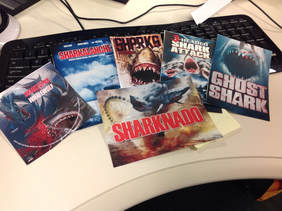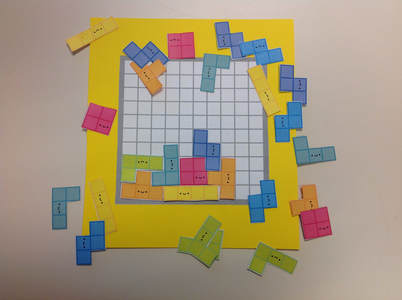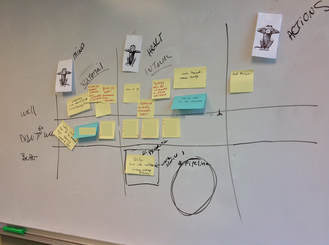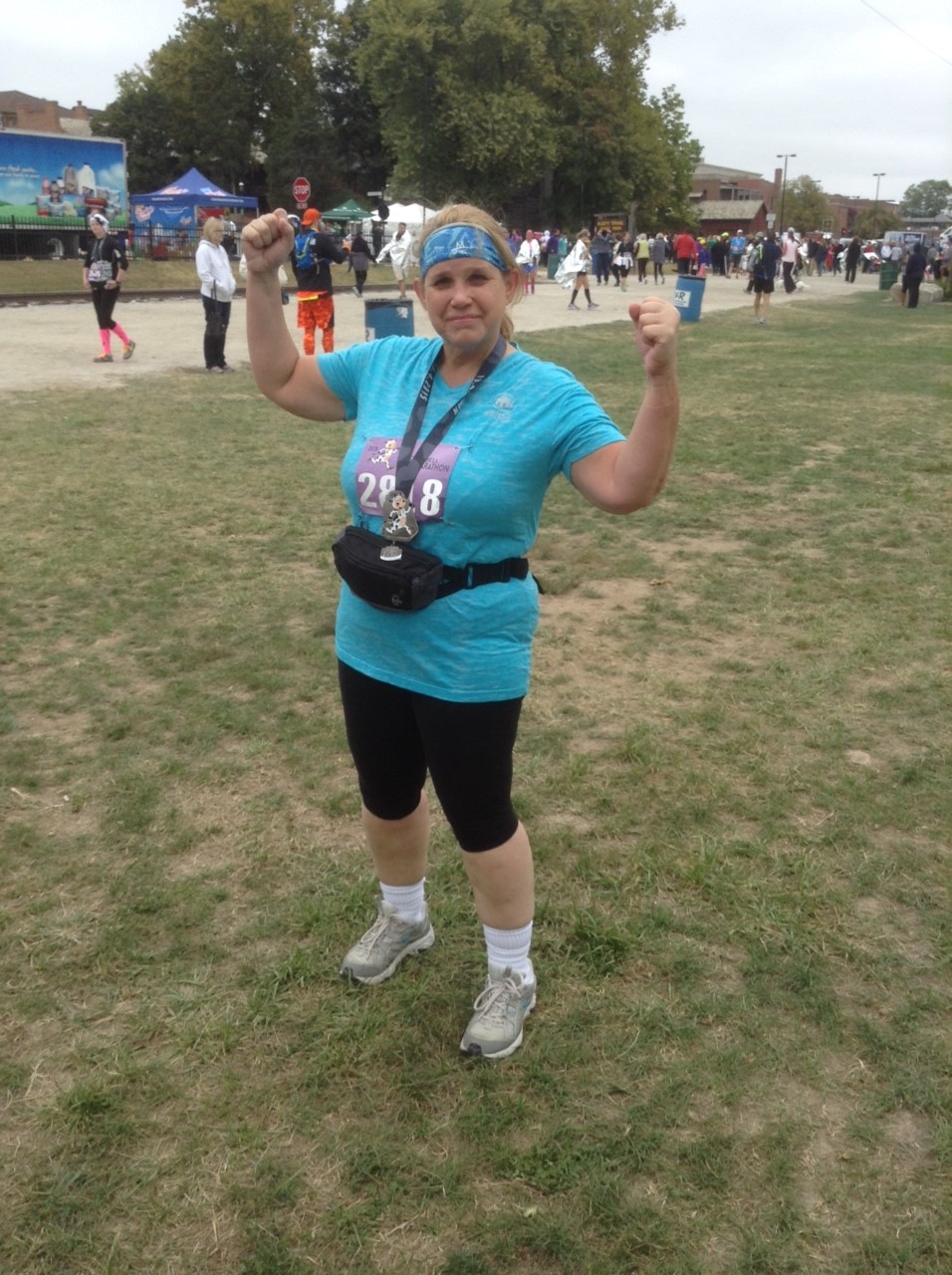
I love SyFy's Shark Week, and counted down the days until the premiere "Sharknado 5 - Global Swarming." Of course, I couldn't resist creating a retrospective...no...a SHARKTROSPECTIVE!
Supplies
1. Printouts of a handful of your favorite shark movie posters (as seen to the right).
2. Post-Its, or better, 20 cutouts of sharks.
3. Sticky notes and pens, of course!
4. Tape
Setup
1. Tape the shark posters to a white board or large sheet of paper, spaced out.
2. Create your own titles for each shark poster. For instance, because "Sharknado" is so awesome, I labeled that one, "What Went Well." The label on "Sharktopus vs. Whalewolf" reflected the mashup of the title characters: "Integration Points." Use your creativity and knowledge of the team to put significant labels on each shark poster.
Activity
1. Hand each team member a handful of shark cutout (or Post-Its) and have them write a subject on each one: something that went well, something that revolved around integration points, etc.
2. Tape each shark cut-out to the appropriate shark poster, grouping as needed.
3. Discuss, dot vote, or prioritize the items until one or two clear action items come out of the retrospective.
4. Write the action items on shark cutouts, and hang them in the team area as reminders.
Supplies
1. Printouts of a handful of your favorite shark movie posters (as seen to the right).
2. Post-Its, or better, 20 cutouts of sharks.
3. Sticky notes and pens, of course!
4. Tape
Setup
1. Tape the shark posters to a white board or large sheet of paper, spaced out.
2. Create your own titles for each shark poster. For instance, because "Sharknado" is so awesome, I labeled that one, "What Went Well." The label on "Sharktopus vs. Whalewolf" reflected the mashup of the title characters: "Integration Points." Use your creativity and knowledge of the team to put significant labels on each shark poster.
Activity
1. Hand each team member a handful of shark cutout (or Post-Its) and have them write a subject on each one: something that went well, something that revolved around integration points, etc.
2. Tape each shark cut-out to the appropriate shark poster, grouping as needed.
3. Discuss, dot vote, or prioritize the items until one or two clear action items come out of the retrospective.
4. Write the action items on shark cutouts, and hang them in the team area as reminders.



 RSS Feed
RSS Feed